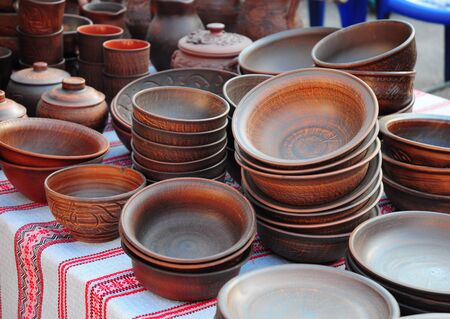1. Understanding Singing Bowls: Origins and Uses
Singing bowls have a rich history that spans centuries and continents. Originally from the Himalayan regions of Nepal, Tibet, and India, these unique metal bowls are known for their distinctive, resonant tones when played. In recent years, singing bowls have become increasingly popular in the United States, especially among those interested in mindfulness, meditation, and holistic wellness.
Where Do Singing Bowls Come From?
Traditionally, singing bowls were handcrafted by skilled artisans using a blend of metals—sometimes up to seven different types. These bowls were used in spiritual rituals and healing ceremonies by Buddhist monks and local healers.
| Region | Traditional Use | Material |
|---|---|---|
| Tibet/Nepal | Meditation & Rituals | Bronze or Metal Alloy |
| India | Healing & Ceremonies | Brass/Bronze |
| United States (Modern) | Wellness & Mindfulness Practices | Varied (Metal/Crystal) |
Cultural Significance of Singing Bowls
Singing bowls carry deep cultural meaning in their countries of origin. They are often associated with spiritual awakening, meditation, and the balancing of energies. In America today, they are valued not only for their beautiful sounds but also as tools for personal growth and relaxation.
Modern Applications in the U.S.
- Meditation: Many Americans use singing bowls to help focus during meditation sessions.
- Yoga Classes: Instructors incorporate the soothing tones to signal transitions or encourage relaxation.
- Wellness Centers: Singing bowl sound baths are offered as part of stress reduction therapies.
- Personal Practice: Individuals use them at home for grounding and calming experiences.
Why Are Singing Bowls Popular Among Americans?
The growing interest in mindfulness and holistic health has made singing bowls a popular choice for people seeking natural ways to manage stress and enhance well-being. Their versatility means they can be enjoyed by beginners and experienced practitioners alike, making them a great addition to any wellness toolkit.
2. Spotting Authenticity: What Makes a Genuine Singing Bowl
If youre shopping for singing bowls in America, its important to know how to tell the real, handcrafted ones from factory-made imitations. Authentic singing bowls have unique qualities that set them apart and can make a big difference in your experience. Here are some key things to look out for:
Handcrafted vs. Mass-Produced Bowls
| Feature | Handcrafted Singing Bowls | Mass-Produced or Imitation Bowls |
|---|---|---|
| Material | Usually made from a mix of seven traditional metals, often with visible color variations | May use cheap alloys or single metal, often looks too shiny or uniform |
| Appearance | Has small imperfections, hammer marks, and unique patterns; each bowl looks slightly different | Smooth, flawless, identical design; lacks character and individuality |
| Sound Quality | Produces rich, layered tones that last; sound feels warm and complex | Sound may be flat, metallic, or short-lived; lacks depth and vibration |
| Origin | Often comes with information about the artisan or place of origin (Nepal, Tibet) | No clear background or mass-produced in factories (often in China or India) |
| Price Point | Tends to be higher due to craftsmanship and materials used | Chemically cheap because of lower quality and mass production |
How to Check for Authenticity When Shopping in the U.S.
- Ask Questions: Don’t hesitate to ask sellers where the bowl was made and who made it.
- Look for Certification: Some reputable retailers provide authenticity certificates or artisan info cards.
- Inspect Closely: Look for hand-hammered marks and variations in shape or finish.
- Listen Before Buying: If possible, ring the bowl yourself—authentic bowls have a deep, lingering tone.
- Avoid “Too Perfect”: If it looks machine-made or overly polished, it’s probably not handcrafted.
Cultural Respect and Ethical Shopping Tips
When buying a singing bowl in America, supporting authentic artisans not only ensures better quality but also helps preserve traditional craftsmanship. Look for shops or online stores that value fair trade practices and can share details about their sourcing process.
![]()
3. Where to Shop in the U.S.: Trusted Sources and Retailers
When searching for authentic singing bowls in the United States, knowing where to shop is just as important as knowing what to look for. The American market offers a variety of options, from local stores to online platforms. Here’s how you can find reputable sources for genuine singing bowls:
Trusted Places to Buy Authentic Singing Bowls
| Type of Seller | Description | What to Look For |
|---|---|---|
| Specialty Stores | Brick-and-mortar shops focused on spiritual or wellness goods. | Staff expertise, bowl origins, ability to try bowls in person. |
| Online Marketplaces | Websites like Etsy and Amazon that host various sellers. | Customer reviews, seller ratings, clear photos, detailed descriptions. |
| Local Artisans | Crafters or small businesses making or importing authentic bowls. | Direct communication with makers, custom orders, support small business. |
| Meditation Centers & Yoga Studios | Places often sell quality bowls sourced from trusted suppliers. | Chance to test sound and craftsmanship before purchase. |
Popular U.S.-Based Retailers and Platforms
- The Ohm Store: Known for importing hand-hammered bowls from Nepal. Offers sound samples online so you can hear each bowl before buying.
- Bodhisattva Trading Co.: Specializes in Tibetan spiritual items, including antique and new singing bowls with clear authenticity information.
- Etsy: Features many independent sellers offering handmade and vintage singing bowls. Look for shops with high ratings and detailed product information.
- Amazon: Convenient for quick shopping but be sure to check seller credentials and customer feedback for authenticity assurance.
- Your Local Metaphysical Shops: Many cities have stores dedicated to holistic health and spiritual goods—perfect for trying out bowls in person.
Tips for Safe Shopping
- Ask Questions: Don’t hesitate to inquire about the origin, materials, and process used to create the singing bowl.
- Check Return Policies: Especially when buying online, make sure there’s a fair return or exchange policy in case the bowl isn’t what you expected.
- Listen Before You Buy: Whether shopping in person or online, try to listen to the actual sound of the bowl. Many sellers post audio clips or videos.
- Avoid “Tourist” Bowls: Be wary of mass-produced bowls marketed as “authentic”—these are often made by machines and may lack true vibrational quality.
Your Best Bet: Combining Online Research With Local Experiences
If possible, visit local stores or events where you can see and hear singing bowls up close. Then compare your experiences with options available online. This approach helps ensure you find an authentic bowl that truly resonates with you, both in quality and sound.
4. Ask the Right Questions: Ensuring Quality and Ethical Sourcing
When shopping for authentic singing bowls in the U.S., its important to go beyond just looks and sound. Asking the right questions can help you find a high-quality bowl that’s ethically sourced and genuinely handmade. Here are some helpful tips on what to ask sellers before making your purchase:
Questions About Materials
- What is the bowl made of? — Authentic singing bowls are usually crafted from a mix of metals, often called “seven metals.” Ask for specifics about the metal content.
- Is it hand-hammered or machine-made? — Hand-hammered bowls tend to have unique marks and a warmer tone, while machine-made ones might sound more uniform but less rich.
Questions About Origin
- Where was this singing bowl made? — Genuine bowls often come from Nepal, India, or Tibet. Knowing the origin helps ensure authenticity.
- Can you provide details about who made it? — Some sellers work directly with artisans, and transparency here adds trust.
Questions About Fair Trade Practices
- Is this bowl fair trade or ethically sourced? — Ethically sourced items ensure artisans receive fair wages and work in good conditions.
- Do you support any artisan communities? — This can show if your purchase helps local makers or supports positive community projects.
Quick Reference: What to Ask Sellers
| Category | Sample Question | Why It Matters |
|---|---|---|
| Material | “What metals are used in this bowl?” | Confirms authenticity and quality |
| Origin | “Where was this bowl handcrafted?” | Ensures traditional craftsmanship |
| Fair Trade | “Is this product ethically sourced?” | Supports responsible purchasing |
| Artisan Support | “Do you work directly with local makers?” | Adds value to your purchase decision |
A Friendly Reminder for American Shoppers:
If a seller hesitates or can’t answer these questions clearly, it could be a red flag. Shopping mindfully not only brings home an authentic singing bowl but also supports ethical business practices that make a difference globally.
5. Integrating Singing Bowls into Your American Lifestyle
Making Singing Bowls Part of Your Daily Routine
Singing bowls aren’t just for meditation gurus or yoga studios—they can easily become a meaningful part of your everyday American life. You can use them for a quick morning mindfulness check-in, a calming ritual before bed, or even as a gentle reminder to pause and breathe during your busy work-from-home schedule.
| Activity | How to Use the Singing Bowl |
|---|---|
| Morning Wake-Up | Ring the bowl gently to start your day with intention and focus. |
| Work Breaks | Use the soothing sound for a 5-minute reset between meetings or tasks. |
| Evening Wind-Down | Play the bowl to relax your mind and signal your body it’s time to rest. |
| Meditation Practice | Begin or end meditations with a few strikes or circles around the rim. |
| Family Time | Create a mindful moment before meals or group activities by ringing the bowl together. |
Incorporating Singing Bowls into Home Décor
Singing bowls aren’t just functional—they’re beautiful! Place them in living rooms, home offices, or bedrooms to add a touch of global elegance and peaceful energy. Pair your bowl with elements like candles, books, or plants for an inviting display. In open-plan spaces, they make great conversation starters about mindfulness and world cultures.
Décor Ideas:
- Coffee Table Centerpiece: Set your singing bowl atop a decorative tray with crystals or small stones.
- Shelf Accent: Display alongside travel mementos for a worldly vibe.
- Meditation Nook: Keep within arm’s reach with your favorite cushion or blanket.
- Entryway Welcome: Place near your front door as a symbol of calm entering your home.
Singing Bowls in Mindfulness and Well-Being Practices
Singing bowls are fantastic tools for cultivating mindfulness—a growing trend in American wellness culture. Try using yours during guided meditations, yoga flows, or even journaling sessions. They’re also helpful in grounding kids during homework time or calming household pets when things get noisy. The gentle vibrations can help everyone refocus and recharge.
Quick Mindfulness Tips:
- Breathe with the Sound: Focus on your breath as you listen to the bowl’s resonance fade away.
- Intentional Pauses: Pause what you’re doing, ring the bowl, and set an intention for the next part of your day.
- Group Activities: Use the singing bowl to open and close group gatherings, book clubs, or family meetings for more presence and connection.
Singing bowls offer Americans an easy way to enhance daily routines, create inviting spaces at home, and deepen their mindfulness practices for holistic well-being. With a little creativity, these timeless instruments can blend beautifully into modern American lifestyles.


